Now to consider the important issue of interlocking trispokedovetiles against movement in the direction normal to the tiled plane, which for the
application of tiled armour would be the normal to the armour surface, in the direction of a bullet's path.
BILAYER TRISPOKEDOVETILES
I propose that the unit armour tile be comprised of 2 joined trispokedovetiles with matching HEXAGON parameters but each with a different CIRCLE
percentage.
For example, suppose we choose trispokedovetiles with CIRCLE = 100% and 121%.
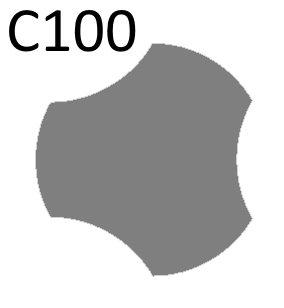 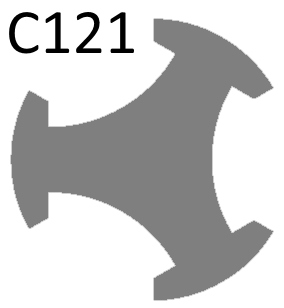
The reason for choosing C100 for the outer layer of the armour is because its 120 degree angle corners would be more robust.
The reason for choosing C121 for the inner layer of the armour is because CIRCLE = 121% offers the largest percentage where the neck attaching the
outer part rings is at least twice the thickness of the ring, attempting to balance the robustness of the ring parts to the robustness of the neck
versus tensile stresses.
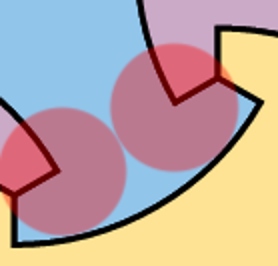
Stacking and joining those together forms a bilayer trispokedovetile, "C100+C121".
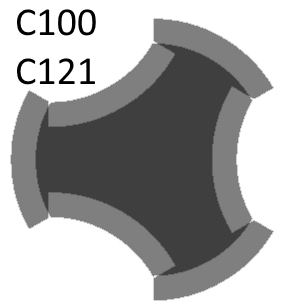 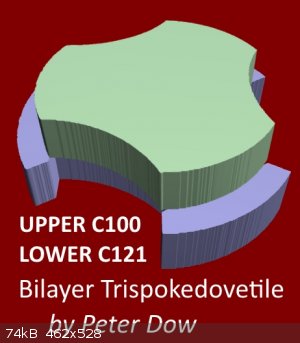
Drawing the 2 layers semi-transparently we can see how the bilayer trispokedovetiles would interlock in the normal to the plane.
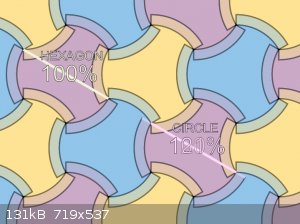
2/3rds of the tiles can be slotted together, either the yellows and the blues or the yellows and the purples or the blues and the purples.
However the final 1/3rd of the tiles would not simply slot in and would have to be inserted by joining the two halves of the bilayer trispokedovetile
in situ.
|









